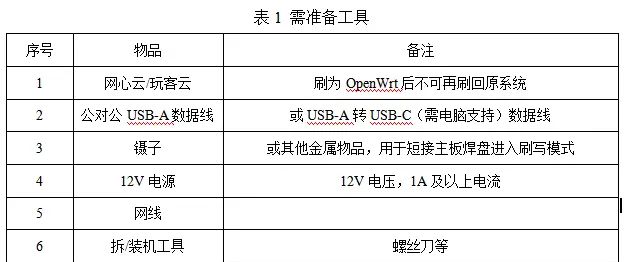0-离线安装k3s集群
针对生产环境下的 K3s,一个不可逾越的问题就是离线安装。在你的离线环境需要准备以下 3 个组件:
K3s 的安装脚本
K3s 的二进制文件
K3s 依赖的镜像
以上三个组件都可以通过K3s Release页面下载,如果在国内使用,推荐从 http://mirror.cnrancher.com编辑>获得这些组件。
Containerd + 手动部署镜像方式
假设你已经将同一版本的 K3s 的安装脚本(k3s-install.sh)、K3s 的二进制文件(k3s)、K3s 依赖的镜像(k3s-airgap-images-amd64.tar)下载到了/root目录下。
如果你使用的容器运行时为containerd,在启动 K3s 时,它会检查/var/lib/rancher/k3s/agent/images/是否存在可用的镜像压缩包,如果存在,就将该镜像导入到containerd 镜像列表中。所以我们只需要下载 K3s 依赖的镜像到/var/lib/rancher/k3s/agent/images/目录,然后启动 K3s 即可。
1. 导入镜像到 containerd 镜像列表
sudo mkdir -p /var/lib/rancher/k3s/agent/images/ sudo cp /root/k3s-airgap-images-amd64.tar /var/lib/rancher/k3s/agent/images/ |
1. 将 K3s 安装脚本和 K3s 二进制文件移动到对应目录并授予可执行权限
sudo chmod a+x /root/k3s /root/k3s-install.sh sudo cp /root/k3s /usr/local/bin/ |
1. 安装 K3s
INSTALL_K3S_SKIP_DOWNLOAD=true /root/k3s-install.sh |
稍等片刻,即可查看到 K3s 已经成功启动:
1. 配置k3s 集群代理方便安装软件
server 位置
/etc/systemd/system/k3s.service.env |
agent位置
/etc/systemd/system/k3s-agent.service.env |
HTTP_PROXY=http://192.168.1.60:7897 HTTPS_PROXY=http://192.168.1.60:7897 NO_PROXY=127.0.0.0/8,10.0.0.0/8,172.16.0.0/12,192.168.0.0/16 |
1-安装kubesphere
执行以下命令开始安装:
kubectl apply -f https://github.com/kubesphere/ks-installer/releases/download/v3.4.1/kubesphere-installer.yaml kubectl apply -f https://github.com/kubesphere/ks-installer/releases/download/v3.4.1/cluster-configuration.yaml |
如果需要开启devops则需要先下载cluster-configuration.yaml,在其中搜索devops并设置为true
devops: enabled: true # 将“false”更改为“true”。 |
检查安装日志:
kubectl logs -n kubesphere-system $(kubectl get pod -n kubesphere-system -l 'app in (ks-install, ks-installer)' -o jsonpath='{.items[0].metadata.name}') -f
|
使用 kubectl get pod –all-namespaces 查看所有 Pod 是否在 KubeSphere 的相关命名空间中正常运行。如果是,请通过以下命令检查控制台的端口(默认为 30880):
kubectl get svc/ks-console -n kubesphere-system |
确保在安全组中打开了端口 30880,并通过 NodePort (IP:30880) 使用默认帐户和密码 (admin/P@88w0rd) 访问 Web 控制台。
登录控制台后,您可以在系统组件中检查不同组件的状态。如果要使用相关服务,可能需要等待某些组件启动并运行。
2-开启devops组件
以 admin 用户登录控制台,点击左上角的平台管理,选择集群管理。
点击定制资源定义,在搜索栏中输入 clusterconfiguration,点击搜索结果查看其详细页面。
信息
定制资源定义(CRD)允许用户在不新增 API 服务器的情况下创建一种新的资源类型,用户可以像使用其他 Kubernetes 原生对象一样使用这些定制资源。
在自定义资源中,点击 ks-installer 右侧的 ,选择编辑 YAML。
在该 YAML 文件中,搜索 devops,将 enabled 的 false 改为 true。完成后,点击右下角的确定,保存配置。
devops: enabled: true # 将“false”更改为“true”。 |
在 kubectl 中执行以下命令检查安装过程:
kubectl logs -n kubesphere-system $(kubectl get pod -n kubesphere-system -l 'app in (ks-install, ks-installer)' -o jsonpath='{.items[0].metadata.name}') -f
|
6.通过 kubectl 验证组件的安装 执行以下命令来检查容器组的状态:
kubectl get pod -n kubesphere-devops-system |
如果组件运行成功,输出结果如下:
NAME READY STATUS RESTARTS AGE devops-jenkins-5cbbfbb975-hjnll 1/1 Running 0 40m s2ioperator-0 1/1 Running 0 41m |
3-安装gitlab
注意事项: GITLAB_HOST 不能设置成ip,会导致pod无法启动 ssh 远端示例ssh://git@192.168.1.33:31022/zyj/zyj-cloud.git
1.安装pg postgresql-rc.yml
apiVersion: v1
kind: ReplicationController
metadata:
name: postgresql
namespace: gitlab
spec:
replicas: 1
selector:
name: postgresql
template:
metadata:
name: postgresql
labels:
name: postgresql
spec:
containers:
- name: postgresql
image: sameersbn/postgresql:14-20230628
env:
- name: DB_USER
value: gitlab
- name: DB_PASS
value: passw0rd
- name: DB_NAME
value: gitlab_production
- name: DB_EXTENSION
value: pg_trgm
ports:
- name: postgres
containerPort: 5432
volumeMounts:
- mountPath: /var/lib/postgresql
name: data
livenessProbe:
exec:
command:
- pg_isready
- -h
- localhost
- -U
- postgres
initialDelaySeconds: 30
timeoutSeconds: 5
readinessProbe:
exec:
command:
- pg_isready
- -h
- localhost
- -U
- postgres
initialDelaySeconds: 5
timeoutSeconds: 1
volumes:
- name: data
emptyDir: {}
|
postgresql-svc.yml
apiVersion: v1
kind: ReplicationController
metadata:
name: postgresql
namespace: gitlab
spec:
replicas: 1
selector:
name: postgresql
template:
metadata:
name: postgresql
labels:
name: postgresql
spec:
containers:
- name: postgresql
image: sameersbn/postgresql:14-20230628
env:
- name: DB_USER
value: gitlab
- name: DB_PASS
value: passw0rd
- name: DB_NAME
value: gitlab_production
- name: DB_EXTENSION
value: pg_trgm
ports:
- name: postgres
containerPort: 5432
volumeMounts:
- mountPath: /var/lib/postgresql
name: data
livenessProbe:
exec:
command:
- pg_isready
- -h
- localhost
- -U
- postgres
initialDelaySeconds: 30
timeoutSeconds: 5
readinessProbe:
exec:
command:
- pg_isready
- -h
- localhost
- -U
- postgres
initialDelaySeconds: 5
timeoutSeconds: 1
volumes:
- name: data
emptyDir: {}
|
2.安装redis redis-rc.yml
apiVersion: v1
kind: ReplicationController
metadata:
name: redis
namespace: gitlab
spec:
replicas: 1
selector:
name: redis
template:
metadata:
name: redis
labels:
name: redis
spec:
containers:
- name: redis
image: redis:6.2.6
ports:
- name: redis
containerPort: 6379
volumeMounts:
- mountPath: /var/lib/redis
name: data
livenessProbe:
exec:
command:
- redis-cli
- ping
initialDelaySeconds: 30
timeoutSeconds: 5
readinessProbe:
exec:
command:
- redis-cli
- ping
initialDelaySeconds: 5
timeoutSeconds: 1
volumes:
- name: data
emptyDir: {}
|
redis-svc.yml
apiVersion: v1
kind: Service
metadata:
name: redis
namespace: gitlab
labels:
name: redis
spec:
ports:
- name: redis
port: 6379
targetPort: redis
selector:
name: redis
安装gitlab gitlab-rc.yml
apiVersion: v1
kind: ReplicationController
metadata:
name: gitlab
namespace: gitlab
spec:
replicas: 1
selector:
name: gitlab
template:
metadata:
name: gitlab
labels:
name: gitlab
spec:
containers:
- name: gitlab
image: sameersbn/gitlab:16.10.0
env:
- name: TZ
value: Asia/Shanghai
- name: GITLAB_TIMEZONE
value: Asia/Shanghai
- name: GITLAB_SECRETS_DB_KEY_BASE
value: long-and-random-alpha-numeric-string
- name: GITLAB_SECRETS_SECRET_KEY_BASE
value: long-and-random-alpha-numeric-string
- name: GITLAB_SECRETS_OTP_KEY_BASE
value: long-and-random-alpha-numeric-string
- name: GITLAB_ROOT_PASSWORD
value: jgj123456
- name: GITLAB_ROOT_EMAIL
value: zhanglei@zyj.com
- name: GITLAB_HOST
value: git.jgj.com
- name: GITLAB_PORT
value: "80"
- name: GITLAB_SSH_PORT
value: "31022"
- name: GITLAB_NOTIFY_ON_BROKEN_BUILDS
value: "true"
- name: GITLAB_NOTIFY_PUSHER
value: "false"
- name: GITLAB_BACKUP_SCHEDULE
value: daily
- name: GITLAB_BACKUP_TIME
value: 01:00
- name: DB_TYPE
value: postgres
- name: DB_HOST
value: postgresql
- name: DB_PORT
value: "5432"
- name: DB_USER
value: gitlab
- name: DB_PASS
value: passw0rd
- name: DB_NAME
value: gitlab_production
- name: REDIS_HOST
value: redis
- name: REDIS_PORT
value: "6379"
- name: SMTP_ENABLED
value: "false"
- name: SMTP_DOMAIN
value: www.example.com
- name: SMTP_HOST
value: smtp.gmail.com
- name: SMTP_PORT
value: "587"
- name: SMTP_USER
value: mailer@example.com
- name: SMTP_PASS
value: password
- name: SMTP_STARTTLS
value: "true"
- name: SMTP_AUTHENTICATION
value: login
- name: IMAP_ENABLED
value: "false"
- name: IMAP_HOST
value: imap.gmail.com
- name: IMAP_PORT
value: "993"
- name: IMAP_USER
value: mailer@example.com
- name: IMAP_PASS
value: password
- name: IMAP_SSL
value: "true"
- name: IMAP_STARTTLS
value: "false"
ports:
- name: http
containerPort: 80
- name: ssh
containerPort: 31022
volumeMounts:
- mountPath: /home/git/data
name: data
livenessProbe:
httpGet:
path: /
port: 80
initialDelaySeconds: 180
timeoutSeconds: 5
readinessProbe:
httpGet:
path: /
port: 80
initialDelaySeconds: 5
timeoutSeconds: 1
volumes:
- name: data
emptyDir: {}
|
gitlab-svc.yml
apiVersion: v1
kind: Service
metadata:
name: gitlab
namespace: gitlab
labels:
name: gitlab
spec:
type: NodePort
ports:
- name: http
port: 80
targetPort: http
nodePort: 31080
- name: ssh
port: 22
targetPort: ssh
nodePort: 31022
selector:
name: gitlab
4-安装nexus3
指定secret的话需要手动配置nexus3-root-password的secret
5-安装harbor一、helm安装nginx-ingress-controllervalues.yml修改(本文章配置项的值均为修改后,因为是dev环境不使用负载均衡器 后面不再赘述):
修改完values.yml后直接执行helm install ..安装即可 二、从kubesphere应用商店部署harbor准备工作: 需要创建一个企业空间、一个项目和一个用户帐户 (project-regular) 供本教程操作使用。该帐户需要是平台普通用户,并邀请至项目中赋予 operator 角色作为项目操作员。本教程中,请以 project-regular 身份登录控制台,在企业空间 demo-workspace 中的 demo-project 项目中进行操作。有关更多信息,请参见创建企业空间、项目、用户和角色。 步骤 1:从应用商店中部署 Harbor本示例为http模式,不开启https。 在 demo-project 项目的概览页面,点击左上角的应用商店。 找到 Harbor,点击应用信息页面上的安装。 设置名称并选择应用版本。请确保将 Harbor 部署在 demo-project 中,点击下一步。 在应用设置页面,编辑 Harbor 的配置文件
步骤2:测试harbor管理页面及docker登陆私有仓库访问 http://192.168.1.33:30002 使用 账号 admin 密码Harbor12345 登陆web 测试是否可用 docker 客户端需配置daemon.json:
docker登陆私有仓库
相关链接: kubesphere应用商店部署harbor [在 KubeSphere 中部署 Harbor] 6-创建devops项目1. 在kubesphere的企业空间中创建空间 7-部署准备创建git访问凭证 1.1 首先创建一个gitlab账户,配置仓库访问权限,记住用户名和密码 1.2 进入到devops项目中,在左侧devops项目设置中添加凭证 类型选择用户名和密码,填充一个上面的用户名和密码 创建harbor凭证 2.1 登录harbor 创建项目,在项目中的机器人账户菜单,添加一个机器人账户,保存机器人账户的名称和token 2.2 添加凭证,类型选择用户名和密码,填充一个上面的用户名和密码 创建集群配置 添加凭证,选择kubeconfig,kubesphere会自动生成一个当前登录用户的集群配置文件 在集群中配置maven私服 在kubesphere-devops-worker命名空间的configmap中找到ks-devops-agent,编辑MavenSetting配置镜像
5.创建imagePullSecret -n 指定部署空间,imagePullSecret 要与部署空间一致 kubectl create secret docker-registry zyjloginharbor –docker-username=机器人账户名 –docker-password=机器人账户凭证 –docker-server=192.168.1.33:30002 -n zyj-cloud 这样会生成类似下边的secret值,因为机器人账号可能有特殊字符会导致username 不正确,如果看到username不正确,可以手动修改secret,auth为username:password的base64编码
更改k3s 镜像配置,允许访问insecure registry vi /etc/rancher/k3s/registries.yaml 添加以下内容
8-在git仓库中创建Dockerfile和deployment.ymlDockerfile
deployment.yml 部署文件中同时定义了service将80端口映射到pod的80,用来提供给ingress在集群内部路由使用
9-创建流水线在kubesphere的devops项目中创建流水线,编辑jenkinsfile 示例流水线
全部配置查看 kubesphere-devops-system空间下的jenkins-casc-config配置中的jenkins.yml 这个文件中定义了所有可用的容器 10-创建应用路由1、进入Kubesphere后台界面,点击 平台管理-集群管理 2、点击 集群设置-网关设置-创建 1)配置访问模式为 NodePort 2)配置工作进程数(此配置决定外部打入的请求启用多少个进程进行处理, 适当调大进程数可增加处理并发请求的能力) worker-processes 4 3、点击 应用负载-应用路由-创建 1)输入名称 如:zyj-gateway 2)选择项目 如:zyj-cloud,单击下一步 3)点击 添加路由规则 4)输入域名如api.dev.zyj.com 5)协议选择HTTP,路径保持默认的 “/”即可, 选择服务 如:zyj-gateway-svc , 选择端口 如:80 ,单击下一步 6)添加元数据 注解 选择 nginx.ingress.kubernetes.io/rewrite-target 值输入 / (表示将 /path 路径重定向到后端服务能够识别的根路径 /上面。) 以上配置完成后可生成如下的ingress路由配置 zyj-gateway-ingress.yaml
7) 修改客户端本机的Hosts文件 添加 api.dev.zyj.com 192.168.1.33 8)再次访问api.dev.zyj.com 返回json结构, 说明zyj-gateway服务已部署完毕并通过路由做了转发
|
























暂无评论内容